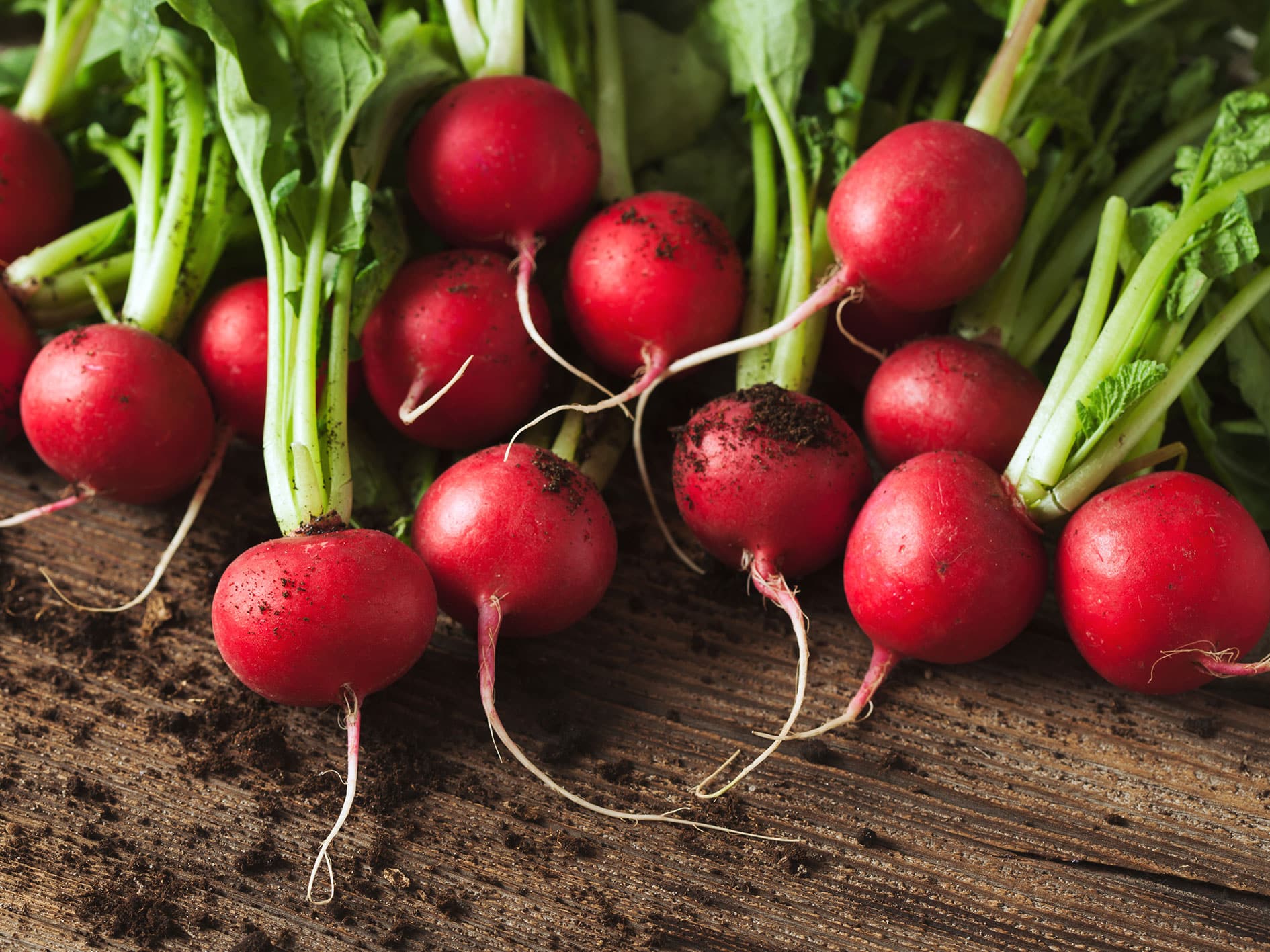Spring is the most exciting time for growing vegetables. Lots of seeds and young plants should be sown and planted over the next few months. With some clever planning, you’ll have fresh vegetables on the table for months to come. Growing veg is easy to do, and once you get the hang of it, you’ll never look back. A little effort now, as the season kicks off, will pay dividends down the line.
You might start with herbs on the kitchen windowsill or cress and mung bean seeds on your office desk (or even your car’s dashboard). Pretty soon it’s a couple of vegetable crops in the garden. Before you know it, you’ve got a full-blown allotment! There are few greater rewards than enjoying new potatoes you’ve grown yourself with your Sunday roast.
The trick to successful growing is to maximise your harvest, minimise loss to drought, blight and pests, and enjoy the fruits of your labour for as long as possible throughout the growing season.
For starters, draw up a simple calendar. Include sowing, planting out and harvesting times. This helps organise your plantings and stagger your crops, so you’re not overwhelmed.
Start simple
Fresh, crispy salad leaves are the easiest edible crop to grow. Some varieties will be ready to harvest in just a few weeks. Look out for a seed mix that will give you a variety of leaves for different colours, tastes, and textures. For best results, sow in stages so you don’t get loads all at once. Sow a couple of lanes every few weeks throughout the summer to ensure a continuous supply. Once you’ve mastered lettuce, try rocket, and spinach too!
Peas are a fuss-free crop that don’t mind cooler weather. Simply sow the seeds in the ground from February onwards and watch them grow. Bear in mind that the plants need support – so put in bamboo canes or chicken wire attached to posts and occasionally wind the stems around as they grow. Pick fresh peas from June to October – the more you pick, the more will grow. Eating them as soon as you pick them will give you that sweet, sugary kick.
Similarly, broad beans and runner beans are easy veg to grow for beginners. Like peas, they need a support system made from bamboo canes or a wire frame. Sow directly into the ground in April and harvest from June onwards. Pick the veg constantly to keep the plant vigorous. If you’re short on space, try a dwarf variety that grows like a little bush – they’re great for containers too.
Spice it up
Add a peppery zing to salads and all types of Asian and Mexican cooking with radishes. They grow well in pots or can be sown directly in the ground in the summer. Remember to sow in stages for a continuous crop, rather than one glut. Great for adding colour to the veg garden, they only take four weeks from sowing to harvest. Make sure to keep the soil moist so they can grow big and fleshy.
As we continue to get more adventurous in the kitchen, chillies are becoming more and more popular. Surprisingly, chilli plants grow well in Britain, when kept warm. The hotter the variety, the more warmth it will need to ripen. Choose something like a mild cayenne variety for the best results.
Sow the seeds indoors on a warm windowsill in spring and move the plants outside in May. Keep watered and harvest from July onwards. Picking the fruit regularly will ensure the plant puts its energy into producing more fruit.


Fruiting favourites
Tomatoes are one of the most popular and easy veg plants to grow from seeds. If you’re growing them outdoors, they can be sown from late March. If you are opting to grow in a greenhouse, you can start sowing from late February. They can also grow in hanging baskets, trailing down fresh, juicy tomatoes.
Plant tomatoes in grow bags that have rich soil, and remember to keep them somewhere warm and sunny. This ripens the fruit. If you don’t want to mess about with seedlings, buy a ready-started plug plant.
Likewise, strawberries can almost be grown anywhere, whether you have a balcony with a window box or hanging basket, patio garden or a large growing space. In March or April, plant the strawberry plants and water them frequently to help them settle into their new space. When watering, water the soil directly rather than the crowns and fruit because this can lead to diseases. Position them in a place with fertile, well-drained soil, sun, and shelter.
To encourage growth and fruiting, it’s important to feed with the right feed at the right time. In early spring, feed with a general fertiliser. Then, during growing season, apply a liquid potash feed every week or two.



Leave A Comment